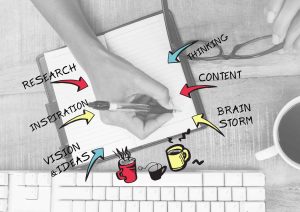Estimated reading time: 8 minutes
Key Takeaways
- AI is redefining productivity by shifting focus from hours worked to quality, accuracy, and strategic impact.
- Automation and generative AI tools reduce repetitive work, enabling employees to prioritise creative and relationship-centred tasks.
- AI-driven decisions leverage large data sets, uncover patterns, and improve planning through scenario modelling.
- Responsible use requires governance, privacy safeguards, bias monitoring, and transparent communication.
- Upskilling and change management are essential to help roles evolve rather than disappear.
Table of contents
Introduction
Artificial intelligence is revolutionising workplace productivity across industries, changing how companies operate and compete in the modern business environment. Adoption has surged, with AI expected to be used by 58 percent of employees worldwide in 2025, a 107 percent rise compared with 2022. This rapid integration signals a fundamental shift in how productivity is measured and delivered.
Hours logged or physical presence no longer define output. Modern businesses deploy AI-powered systems to lift quality, streamline operations and cultivate smarter work environments. As organisations recognise the potential of AI to raise efficiency, attention has pivoted towards strategic deployment rather than experimental trials.
By automating routine activity and supplying data-driven insight, AI helps firms reach unprecedented efficiency while allowing employees to focus on creative and relationship-centred work.
The sections below examine practical AI applications that raise workplace productivity and reshape business operations.
Understanding AI Workplace Productivity
AI workplace productivity involves rethinking efficiency through deliberate use of intelligent technologies. Instead of working harder or longer, organisations work smarter by automating routine tasks, supporting complex decision-making and refining day-to-day processes.
Unlike traditional tools, AI systems learn, adapt and improve over time. They spot patterns, predict outcomes and adjust without constant human input, producing steady improvement cycles that older technologies cannot match.
Recent research shows that users of generative AI save about 5.4 percent of weekly work hours, translating to a 1.1 percent productivity gain. Scaled across an entire workforce, such gains accumulate quickly. Equally important, AI elevates work quality, trims errors and frees staff to tackle tasks demanding creativity, emotional intelligence and strategic thought.
AI Automation Tools
AI automation tools sit at the centre of modern efficiency initiatives. They range from robotic process automation and AI-driven workflow platforms to digital assistants that handle previously manual tasks.
These systems excel at working with structured data, following rules and executing repetitive operations with consistent accuracy. An AI-enabled accounting suite can categorise expenses, reconcile ledgers and assemble reports in minutes. Customer service teams deploy chatbots that respond to routine queries around the clock, allowing human agents to focus on nuanced issues.
Benefits reach beyond time saving. Removing manual touches from routine processes cuts error rates and speeds completion. Documents that once took days to review are analysed in minutes, all while maintaining compliance obligations.
Boston Consulting Group found that firms weaving AI deeply into their processes record far greater productivity gains than those tackling single tasks in isolation. By re-engineering workflows with AI at the core, staff redirect effort towards strategic work that carries higher value. Human insight and machine precision become complementary rather than competitive.
Generative AI in the Workplace
Generative AI ranks among the most influential developments in productivity technology. Powered by large language models and related architectures, these systems craft content, write code, summarise information and automate creative tasks that once demanded extensive human effort.
Usage has soared to 71 percent in 2024, reflecting immediate value. Marketing teams draft articles, slide decks and social posts in minutes. Software engineers lean on coding assistants that generate structures, surface bugs and suggest refinements, cutting development cycles sharply.
Employees report saving several hours a week on writing, editing and design assignments. That time shifts to strategy, client relationships and innovation where human judgement matters most. The wide scope of generative AI, from email drafting to data visualisation, means gains spread across departments and compound over time.
AI Task Automation
AI task automation targets workplace activities that consume large blocks of time yet add little strategic worth. By focusing on high-volume, low-value duties, organisations see immediate returns.
Scheduling assistants arrange meetings across multiple calendars, consider time zones and select optimal slots without endless back-and-forth. Intelligent data extraction tools pull figures from invoices, contracts and forms, then feed business systems automatically. Accuracy improves and transcription errors fall.
Researchers estimate that roughly 42 percent of job activities can be automated with current AI. Roles are not eliminated; they evolve as repetitive elements shift to machines, allowing staff to concentrate on analysis, relationship building and innovation. This redistribution of effort boosts productivity and job satisfaction alike.
AI-Enhanced Decision Making
AI-enhanced decision making changes how leaders analyse information and set direction. By harnessing machine learning and large data sets, organisations gain nuanced, timely insight.
Traditional decision processes lean heavily on intuition and limited data. AI draws from structured and unstructured sources, uncovering relationships that humans would miss. A retailer, for example, uses predictive analytics to balance inventory by weighing past sales, seasonal swings, local weather and social sentiment. Manufacturers forecast equipment failure, schedule maintenance ahead of time and sidestep costly stoppages.
Strategic planning benefits as well. AI models simulate multiple scenarios, clarifying risks and rewards before resources are committed. In volatile markets, quick, informed choices confer an edge. Some firms now run continuous intelligence platforms that update recommendations in real time, empowering proactive action instead of reactive fixes.
AI Content Creation Tools
AI content creation tools have changed how organisations build and manage written, visual and multimedia assets. These technologies help teams produce high-quality material efficiently while preserving brand voice.
Modern generators draft blog posts, product blurbs, internal memos and technical papers. They analyse existing content, mirror tone and output text that typically needs only minor editing. Production timelines shrink and creative teams avoid cognitive overload.
Beyond words, AI designs presentation slides, builds data visualisations and even edits video. Automated captioning and platform-specific formatting ensure materials suit diverse audiences. Translation modules retain nuance across languages, keeping messaging coherent worldwide.
Such tools maintain consistent tone across all channels, support frequent publishing and deliver personalisation at scale. Creative professionals gain space to focus on strategy and storytelling rather than routine production, raising both productivity and content quality.
AI for Scheduling Automation
Scheduling consumes a surprising amount of professional time. Coordinating diaries, time zones and resource availability often involves endless messages and revisions. AI-driven schedulers remove that friction.
These systems parse calendar data, learn individual preferences and propose meeting times that suit every participant. They adjust automatically when conflicts arise, send reminders and secure meeting rooms or video links, all without manual input. Staff reclaim hours each week and projects move forward without delay.
Large enterprises extend this concept to resource allocation. AI platforms match project requirements with staff skills and availability, ensuring the right people tackle the right tasks at the right moment. The result is higher utilisation, lower overtime and smoother delivery.
Security and Ethical Considerations
Widespread AI adoption brings responsibility. Data privacy, algorithmic bias and transparency cannot be afterthoughts. Organisations must implement rigorous governance frameworks covering data sourcing, model training and outcome monitoring.
Regular audits verify that models remain accurate and fair. Explicit consent and clear communication build trust with employees and clients. Investing in staff training on responsible AI use prevents misuse and reinforces organisational values.
Preparing the Workforce for AI Integration
Technology succeeds only when people use it effectively. Upskilling programmes that teach staff to collaborate with AI are essential. Training should cover basic AI literacy, tool-specific skills and critical thinking to evaluate automated outputs.
Job roles will shift rather than vanish. Clear communication about new expectations helps employees adapt. By involving staff in AI tool selection and process redesign, organisations tap frontline insight and foster buy-in.
Conclusion
Artificial intelligence is no longer a theoretical boost to workplace productivity; it is a proven driver of tangible results. Automation tools cut errors and shorten cycles. Generative systems accelerate creative work. Decision platforms illuminate hidden patterns, guiding smarter strategy. Scheduling assistants hand back valuable time.
Firms that treat AI as a core capability rather than an add-on unlock these benefits first. With sound governance, ongoing training and a focus on meaningful human-machine collaboration, organisations can set a pace of productivity that competitors struggle to match.
FAQs
What is meant by AI workplace productivity?
AI workplace productivity refers to using intelligent technologies to automate routine tasks, support complex decision-making and refine processes so organisations can work smarter, not longer.
How much time can generative AI save employees?
Recent research indicates users of generative AI save about 5.4 percent of weekly work hours, translating to a 1.1 percent productivity gain when applied across a workforce.
Will AI replace jobs or change them?
Roles evolve as repetitive elements shift to machines. Employees can focus more on analysis, relationship building and innovation, increasing both productivity and job satisfaction.
Which tasks are best suited for AI automation?
High-volume, low-value activities such as scheduling, data extraction, document processing and routine customer queries are prime candidates for automation.
How should organisations address AI ethics and security?
Implement strong governance covering data sourcing, model training and monitoring. Conduct regular audits, ensure explicit consent, communicate clearly and train staff on responsible AI use.
What skills help employees succeed with AI tools?
Foundational AI literacy, tool-specific proficiency and critical thinking to evaluate automated outputs are key, supported by clear communication about evolving role expectations.







